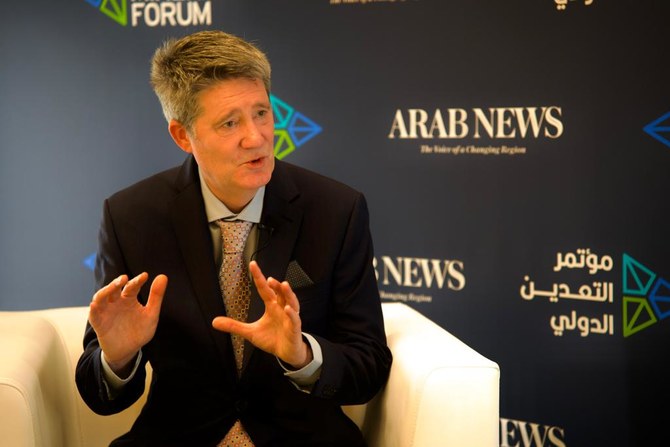Saudi Arabia is set for a groundbreaking technological venture in the mining sector with the launch of the Geoscience Data Analytics Center.
Commissioned by the Saudi government, the facility is expected to commence operations later this year.
Speaking to Arab News at the Future Minerals Forum, Commissioner Rob Wood emphasized the interdisciplinary nature of the center and the significance of developing new programs to train professionals with hybrid skills.
Wood said: “It will be the very first of its kind globally. It will become operational probably in late 2024.”
Saudi Arabia boasts 31 critical minerals and strategic resources, ranging from gold, and silver to nickel and cobalt.
The Kingdom is poised to establish a third industrial pillar centered on mining, with potential reserves estimated at $2.5 trillion, as Wood also highlighted the significance of the Kingdom’s commitment to diversify its economy.
He emphasized that the Geoscience Data Analytics Center would play a pivotal role in utilizing AI to uncover potential mining deposits.
The $2.5 trillion estimate, Wood clarified, is extrapolated from the known data available, emphasizing that extensive land exploration and data collection support this estimation.
“The amount of land that we’ve actually explored and done data collection for. So, we know that there is a significant amount of opportunity left within the Kingdom that we haven’t explored yet,” he noted.
Wood explained that there is a need to establish new interdisciplinary programs, where geologists will be trained in computer science.
He highlighted novel aspects of the center, such as state-of-the-art robotic labs for core scanning and cumulative effects research.
“Literally, nobody on the planet is doing what we’re talking about,” he claimed, adding: “The intent is that the Kingdom will, in fact, have complete control and will be running the center for decades to come.”
Wood elaborated on the ongoing data collection efforts, stating that the gathered information will be fed into a new artificial intelligence platform capable of conducting analytics to identify high-potential mining targets.
The commissioner emphasized the use of AI in modeling mineral deposits, stating, “We’re using machine learning to uncover these high-potential deposits very early in the process.”
He acknowledged the formidable challenge in the mining sector, particularly the difficulty in identifying new targets, referred to as “greenfields,” which he termed as a highly risky endeavor.
“So frequently, they can go out and do a full drilling program and come back with nothing, and you spend literally hundreds of millions of dollars for potentially no result whatsoever.”
To address this challenge, Wood unveiled the ambitious plan to use advanced artificial intelligence to de-risk the costs associated with finding new targets.
“What we’re looking to do is, in fact, de-risk those costs on the mining companies by using advanced artificial intelligence to, in fact, actually find these new targets,” he explained.
The commissioner emphasized the significance of addressing environmental and social impacts in the mining sector, stating: “One of the things the center is going to be doing is actually complex environmental and social impact research.”
In conclusion, Wood highlighted the uniqueness of Saudi Arabia’s position in undertaking this venture, stating: “The discovery of oil is substantially easier than the discovery of minerals. Minerals require sophisticated analytics to find these new deposits.”
As the Kingdom embarks on this groundbreaking initiative, Wood expressed his optimism, stating, “It’s an exciting time to be in Saudi Arabia.”
source/content: arabnews.com (headline edited)
_________

Rob Wood, commissioner of the Geoscience Data Analytics Center, speaking to Arab News.
_________________
SAUDI ARABIA